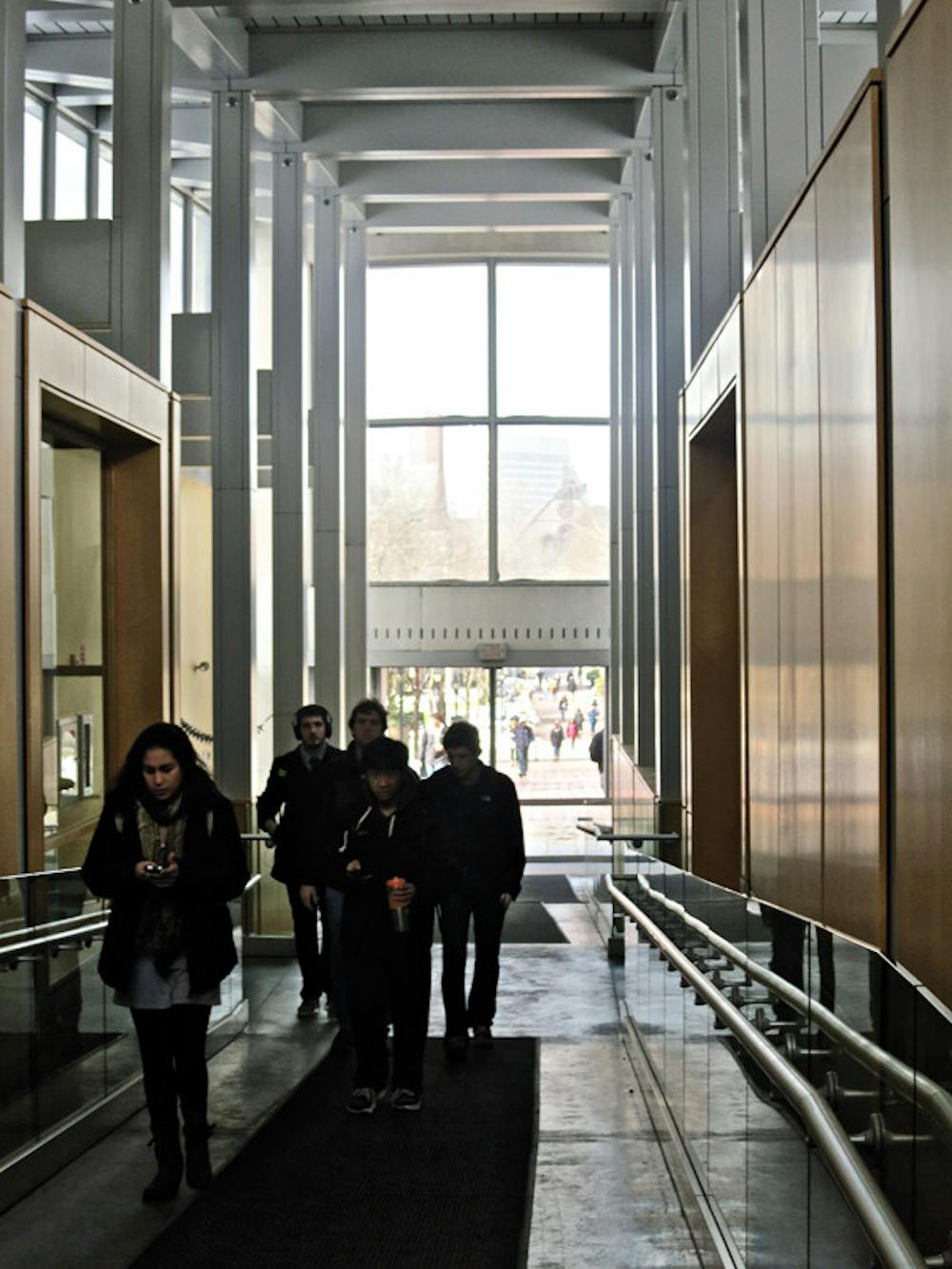For the past two admission cycles, engineering has been the most popular intended concentration among the University’s early decision applicants and has emerged as one of the top concentrations for regular decision applicants, a trend University officials have linked to the perceived employability of engineering students.
In the early admitted class of 2017, 9 percent of students specified engineering as their intended concentration, The Herald previously reported. Engineering was also the second most popular intended concentration among this year’s regular decision applicants, The Herald reported in January.
Dean of Admission Jim Miller ’73 attributed the growing interest in engineering to a more aggressive recruitment strategy coordinated by the Admission Office. The University’s efforts correspond with the move to establish a separate School of Engineering, which was formally created July 2010.
“We’ve spent a lot of time having on-campus engineering events and sending (word of these) events to physical scientists and engineers to recruit them,” Miller said. “We’ve been at this recruiting for six or seven years, but it takes a while to get some traction.”
Miller said career opportunities could be part of the reason for the increase in engineering interest.
“People perceive engineering as a discipline that will get them lots of opportunities post-graduate, open lots of doors and lead in lots of different directions,” Miller said.
Miller added that applicants could also be drawn to the concentration as an avenue for public service. “There are other people who see engineering as a first step to solving a lot of the world’s problems like alternative energy or environmental issues.”
Miller said he believes the uptick in interest is part of a cycle that alternates between an emphasis in the humanities and sciences.
“My sense (when I graduated from Brown) was that Brown was heavily invested in the sciences,” Miller said, adding that the University “led the country” in applied mathematics and computer science in the 1970s. “Then the pendulum swung the other direction, moving towards humanities and social sciences — both nationally and at Brown.”
Miller cited the computer science boom in the late 1990s as an example of how interest in concentrations moves with larger national trends. He noted that computer science was a popular program at the time but there was a loss of interest among college students after the tech bubble burst in the early 2000s.
“These things tend to be cyclical in the history of an institution,” Miller said. “There certainly is more interest in the sciences than there was a decade ago.”
Lawrence Larson, dean of the School of Engineering, said there is a link between the rise in engineering interest among applicants and the prospect of better job opportunities.
“It is a national trend due to the national job market,” Larson said. “The number of jobs available for graduates has grown considerably.”
He noted that the number of students taking introductory engineering courses has grown, with over 200 students enrolled in ENGN0030: “Introduction to Engineering” during the fall 2012 semester. Enrollment in the introductory course rose from 108 in fall 2004 to 225 in fall 2011, according to reports from the Critical Review.
Larson said the School of Engineering has worked to ease entry-level students into the concentration program.
“We want to offer a gentle introduction to engineering,” Larson said, referring to the introductory course. “It’s S/NC by definition, and it’s team-based and hands-on at all levels,” Larson said.
But though interest in engineering has increased at the University, the concentration still faces a persistent gender gap. Larson said currently, one-third of the University’s engineering graduates are women, a percentage he said was “much better than the national average.” Nationally, 13.4 percent of engineering professionals are women, according to a 2011 report from the National Action Council for Minorities in Engineering.
The School of Engineering coordinates a four-week summer engineering program for local high school girls that is targeted toward generating interest in engineering among females, according to the program’s website.
“Historically, girls have been underrepresented in the engineering field,” he said, noting the way to increase the interest “is to excite girls with engineering.”
Andrew Simmons, director of the Center for Careers and Life After Brown, linked greater perceived job opportunities to the uptick in interest.
“Any time you’re looking at technology fields now, there are lots of opportunities,” he said. “We have an adviser in our office who is dedicated to the STEM fields in terms of outreach and working with the School of Engineering.”
Blake Reinson ’14 said he had planned to study engineering when he applied to Brown, identifying the necessity of engineers to society.
“There’s always going to be a need for engineering,” he said. “You have the chance to make happen whatever you want to do.”

ADVERTISEMENT




